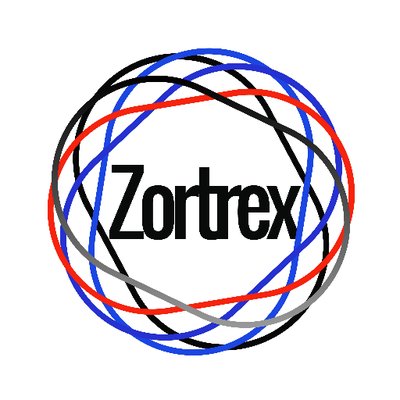It’s not often that we readily endorse a product or company. However, when the nature of work they engage in is considered ground-breaking and has a positive impact on our lives – it most certainly warrants a mention.
The rationale for considering such tech-driven projects as highly significant is neither due to ‘gut feeling’. Nor that it is simply because it is fascinating and therefore must be an excellent product. This project actually has a value proposition for you!
We are indeed well into the information age and while we have written extensively about data, its importance to marketers, and its fragility when used and abused by unscrupulous third-parties for their financial gain.
The issue of data security is, however, quite a serious one. You just need to pay attention to the news to become even more aware.
Data breach incidents
In Europe, where security is supposedly more advanced, we have seen the likes of renowned airline British Airways, being hacked. Several hundreds of thousands of customers’ personal data compromised.
These were followed by hacks on other major airlines such as Cathay Pacific. Aside from airlines, other business outfits have suffered a similar fate.
The perpetrators are getting a lot more brazen and very recently, a cable car, used as public transport in Moscow was hacked. This left vulnerable passengers terrified and stuck high up in the air. And all this happened probably to the amusement of the pranksters (hackers).
Can you imagine the chaos and commotion that would be caused if their control systems of driverless cars were to be hacked?
The digital intrusion gets even more sophisticated...
This time affecting the very wealthy: private yachts are now being hacked and taken into the pirate waters, all via uniquely coded signals, reading data from their antennas!
Data security
On the issue of data security, you often hear about extra protection but not just anti-virus and anti-phishing software. The more secure and heavily encrypted Blockchain technology is, however, making waves in the digital sphere.
It is mainly for the escalation of its once shining star by-product designed for discreet transacting – Bitcoin.
Blockchain technology has also triggered several other technologies based on its digital cryptology technology. The aim is to ensure that your information is kept safe from prying eyes while stored, used, or transferred online.
Blockchain products such as cryptocurrencies, however, are not completely safe from hackers.
A solution
The company we chose to highlight uses a unique vault system and is called Zortrex. It has adopted one of such Blockchain technologies dubbed tokenization. It will be using it to ensure that your highly sensitive data online is kept safe.
“Our tokenised solution would have protected their customers’ personal identification information (PII) details. Instead the hackers ran off with the date of birth; passport numbers; financial data etc,” says Susan Brown, Chairperson of Zortrex – relating to the British Airways incident.
Tokenization is the process of converting rights to real-world assets into a digital token on a blockchain.
Brown’s background in data privacy systems as well as her devoted passion for the protection of PII, financial and healthcare data led her to start up and chair Zortrex.
The law on data
Thanks to new laws like the European GDPR law, which enforces the protection of data, breaches are now met with hefty financial penalties.
“Companies have disrespected your data for over 25 years, and if left unattended, there will be nothing left to protect,” Browns says.
Companies now have to think twice about getting your consent and how to use and share your data digitally. But is it enough? The simple answer is no.
The authorities just do not have the resources to investigate every complaint nor to actively enforce all data breaches.
We have ingeniously invented systems that automatically align with financial messaging, payments and securing information. All of which require data.
“However, we need to go a step further to secure all the PII details with tokenization. This is so that in the event of a hack, the cookies and trackers will only be following a ‘useless’ token will be no real identification on it,” Brown explains.
Zortrex would naturally like to tokenize all healthcare data. This way, vulnerable those of you living outside of major cities can also feel assured that your privacy is protected.
Using Blockchain
The application of the all-powerful blockchain is not limited to use in the financial sector and will be applied via the supply chain to all industries that deal with your data – especially the most sensitive ones.
A business angel or any investor for that matter looking to get onto the next best thing since Amazon would therefore be unwise to pass up the opportunity to back the Zortrex venture given its scope.
Furthermore, regulations are currently being implemented primarily in the pharmaceutical sector.
A tokenized supply chain such as what Zortrex offers would be ideal for this new law which is planned to be implemented by 2023. A judiciary blockchain, for instance, would allow the police to “talk” to the prison service. They, in turn, will communicate with the legal sector or public health institutions (NHS).
Forensic evidence would in such instances be tokenized and kept secure (away from tampering) during legal hearings. In another practical scenario, Smart Contracts (which could replace some lawyers) can spark off legal aid assistance to you.
Your court cases will be heard quicker and be more efficient. Protection registers can also be guarded using tokenization – rendering them more secure.
Blockchain technology offers quality assurance making sure that no shortcuts are taken.This will enable the monitoring and tracking if any of your data is shared with third parties once tokenized. The third-party apps would only gain access to your data once the trigger has been activated.
Like other pioneers and visionaries, Brown’s futuristic hope that every child being born will have their name, date of birth, blood type data being tokenized, might seem far-fetched.
Zortrex wants to use its technology to put the hackers out of business!
Tokenisation cannot be mathematically reversed and thus it will least it will keep the hackers busy for a while.
Scalability
For such high ambitions, the creators of Zortrex’s software have adequately ensured that the technology used is fully scalable. One stumbling block many Blockchain projects now face is what is referred to as scalability. This is the ability of a network or software to grow and manage increased usage.
Cryptocurrencies like Bitcoin and Ethereum specifically – which is used to build a lot of Distributed Applications, however, have massive scalability issues.
The growth in demand for DApps is also crippling (slowing down) those systems. They need to investigate the incorporation of alternative technologies, upgrade or split their platforms to cope with such high demand.
Someone must take the first step in securing this data forever. You should be able to purchase what you want without being harassed by trackers and cookies.
The need for tokenization is endless and further, down the line, celebrities and government official’s PII can be secured by it to protect them from damaging schemes, ‘bad press’, and scandals.
In a previous blog, we “prophesized” that data is the new commodity – like gold or oil. However, the actual value with that data will lie in its privacy, the ability to store it securely and unlock it only with legal permission by its rightful owner.





















